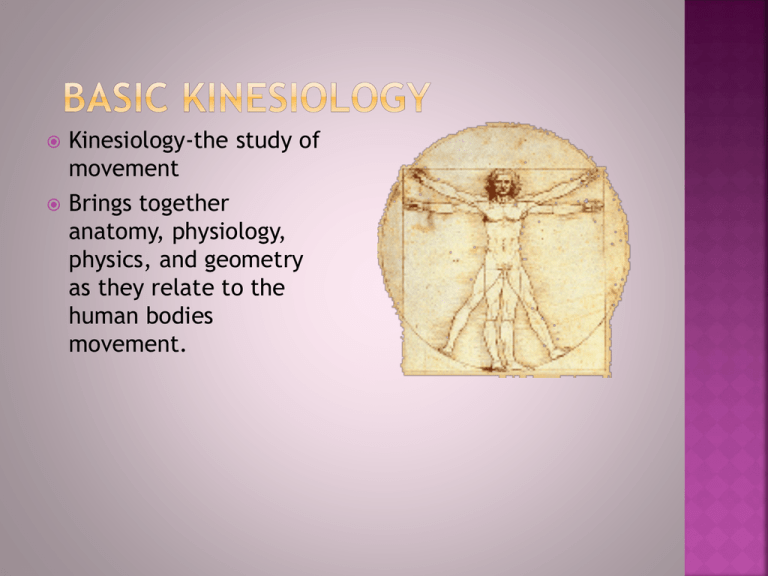Basic Kinesiology Biology Diagrams Kinesiology, as it is known in physical education, athletic training, physical therapy, orthopedics, and physical medicine, is the study of human movement from the point of view of the physical sciences. The study of the human body as a machine for the performance of work has its foundations in three major areas of study—namely, mechanics, anatomy, and physiology; more specifically Kinesiology (from Ancient Greek κίνησις (kínēsis) 'movement' and -λογία -logía 'study of') is the scientific study of human body movement. Kinesiology addresses physiological, anatomical, biomechanical, pathological, neuropsychological principles and mechanisms of movement. Kinesiology is the study of human movement and within the field, individuals learn how these movement mechanisms affect the body and how exercise can improve the overall human health condition. Kinesiology students gain an understanding of the physiological, biomechanical and psychological elements related to human movement and how to apply that knowledge to improve health and wellness. The

Kinesiology, Study of the mechanics and anatomy of human movement and their roles in promoting health and reducing disease. Kinesiology has direct applications to fitness and health, including developing exercise programs for people with and without disabilities, preserving the independence of

PDF Introduction to Kinesiology Biology Diagrams
Chapter 1 Basic Principles of Kinesiology Chapter Outline Kinematics Terminology Osteokinematics Arthrokinematics Kinetics Torque Biomechanical Levers Line of Pull Vectors Summary Study Questions Additional Readings Objectives • Define commonly used anatomic and kinesiologic terminology. • Describe the common movements of the body. • Differentiate between osteokinematic and

Kinesiology is the scientific study of human movement, focusing on the mechanics and physiological aspects of movement in the context of health and wellness. It combines elements of biomechanics, anatomy, physiology, and neuroscience to understand how the body moves and how movement affects overall health. Kinesiology is the scientific study of human movement, focusing on biomechanics, physiology, and motor control. It applies principles from anatomy, physics, and neuroscience to understand how the body moves, functions, and adapts to physical activity. Kinesiology integrates knowledge from disciplines such as anatomy, physiology, biomechanics, psychology, and sociology to understand how the human body moves and functions in different contexts.
